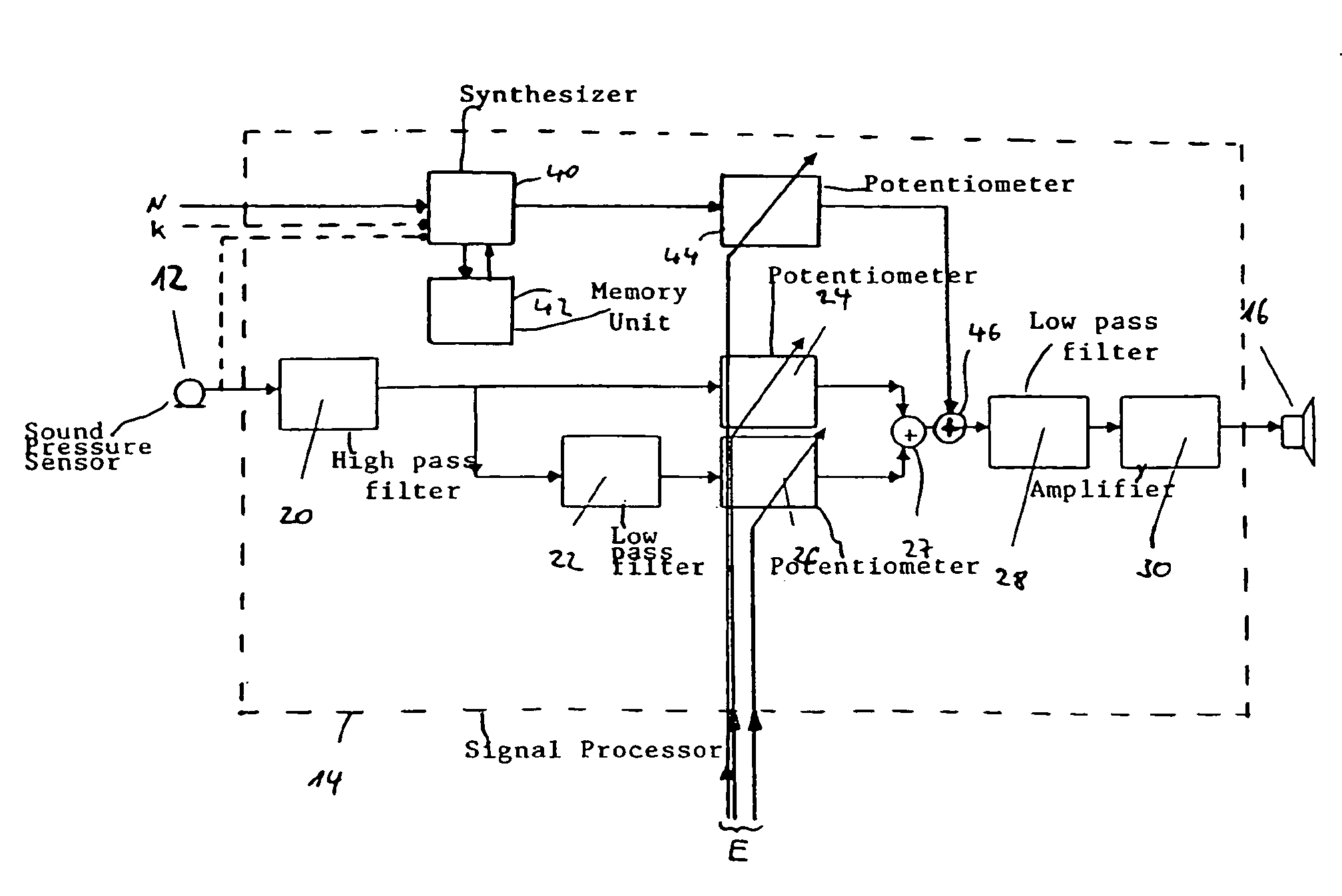Device for electroacoustic sound generation in a motor vehicle
a technology for motor vehicles and electroacoustic sound, which is applied in the direction of gain control, instruments, transportation and packaging, etc., can solve the problems of disadvantageous costs and arrangement within the vehicle, general increase in the sound emitted by these excitation sources, and disadvantageous purely synthetic engine sound production, etc., to achieve the effect of improving the sound
- Summary
- Abstract
- Description
- Claims
- Application Information
AI Technical Summary
Benefits of technology
Problems solved by technology
Method used
Image
Examples
Embodiment Construction
[0020]In an intake tract of a motor (not depicted), a sound pressure sensor 12 is provided, which detects the changes in air pressure produced by the vehicle dynamics and supplies them to a signal processing unit 14. Alternatively, the sound pressure sensor can also be arranged in the exhaust tract, or near the intake or exhaust tract, e.g. in the area of the intake tract inlet or the exhaust tract outlet.
[0021]The signal processing unit 14 processes, among other things, the signals from sound pressure sensor 12 and supplies them to a loudspeaker unit 16 that transforms the signals generated by signal processing unit 14 into acoustic signals and plays them into the passenger compartment. The loudspeakers used can be separate loudspeakers or the loudspeakers of an already existing audio or communications system of a vehicle.
[0022]Signal processing unit 14 in the present case essentially comprises two branches. On the one hand, the signal originating from sound pressure sensor 12 is p...
PUM
 Login to View More
Login to View More Abstract
Description
Claims
Application Information
 Login to View More
Login to View More - R&D
- Intellectual Property
- Life Sciences
- Materials
- Tech Scout
- Unparalleled Data Quality
- Higher Quality Content
- 60% Fewer Hallucinations
Browse by: Latest US Patents, China's latest patents, Technical Efficacy Thesaurus, Application Domain, Technology Topic, Popular Technical Reports.
© 2025 PatSnap. All rights reserved.Legal|Privacy policy|Modern Slavery Act Transparency Statement|Sitemap|About US| Contact US: help@patsnap.com


